Japan sits directly on one edge of the earthshaking “Ring of Fire.” However, there is a positive point to this hazardous location. Japan is a steeply mountainous country that is awash with what are arguably the best hot springs in the world. Blessed, as well, with abundant rainfall, rivers drip from the sides of Japan’s mountainous regions. Travelers in the mountains can enjoy hot springs on riverbanks and, sometimes, springs in the center of swirling rivers.
Immersing yourself in such hot springs is a physically and mentally beneficial experience that is also a large part of Japanese culture. Almost nothing else can compare to tiredly slipping into a refreshing hot spring after an exhaustive hiking or snowshoeing trip in the countryside. If you dare, the bracing shock of jumping from the spring into a cold river in summer or a freezing snow bank in winter will eliminate any repetitive thoughts of career or relationship issues and force your overly cognitive self to feel, to deeply embrace, nature, without mental distractions.
-768x1024.jpg) Japanese hot spring addicts, like me, are always searching for the next “onsen fix.” Onsen means hot spring. Onsen fans enthusiastically compare notes and give recommendations. Countless television programs and thousands of travel magazines regularly examine hot springs. More than 3,000 onsen resort areas are scattered across the Japanese archipelago. Below are stories of three memorable soaks.
Japanese hot spring addicts, like me, are always searching for the next “onsen fix.” Onsen means hot spring. Onsen fans enthusiastically compare notes and give recommendations. Countless television programs and thousands of travel magazines regularly examine hot springs. More than 3,000 onsen resort areas are scattered across the Japanese archipelago. Below are stories of three memorable soaks.
The Hot Spring at Kawairesou
Onsen connoisseurs’ rave reviews of springs amidst beautiful wilderness in Oguni, Yamagata Prefecture, inspired me to drive to the Iide Mountain Range in October. By coincidence my wife and I had arrived on the last day of the year to enjoy the outdoor hot spring outside of a rustic Japanese inn, called Kawairesou (川入荘). Hot spring fanatics, mountain climbers, snowshoers, river fishermen, and other nature lovers often use that inn as a base of exploration. Depending upon the depth of the snow that has fallen in winter, Kawairesou and its outdoor hot spring reopen in late April or early May.
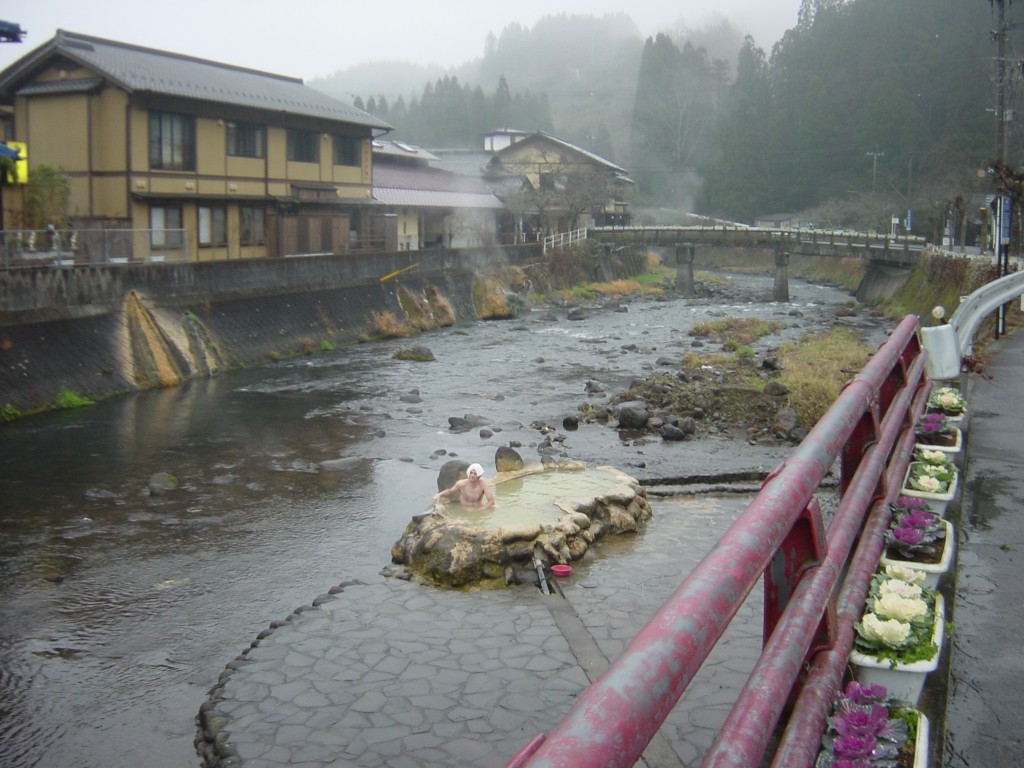 This difficult-to-reach hot spring is perched on a cliff just slightly above an untamed river that is fleeing nearby mountain peaks; swirling around rocks and jumping over crags, the watercourse is rarely calm. While soaking in the hot unfiltered mineral water that rises from deep in the earth, wide views of the river and imposing peaks were in front of my eyes. The only sounds I heard were the gurgle of hot spring water pouring into the bath, tree branches shaking in the wind, and the rushing river. While our contented bodies were heating up, snowflakes falling from above graced our faces.
This difficult-to-reach hot spring is perched on a cliff just slightly above an untamed river that is fleeing nearby mountain peaks; swirling around rocks and jumping over crags, the watercourse is rarely calm. While soaking in the hot unfiltered mineral water that rises from deep in the earth, wide views of the river and imposing peaks were in front of my eyes. The only sounds I heard were the gurgle of hot spring water pouring into the bath, tree branches shaking in the wind, and the rushing river. While our contented bodies were heating up, snowflakes falling from above graced our faces.
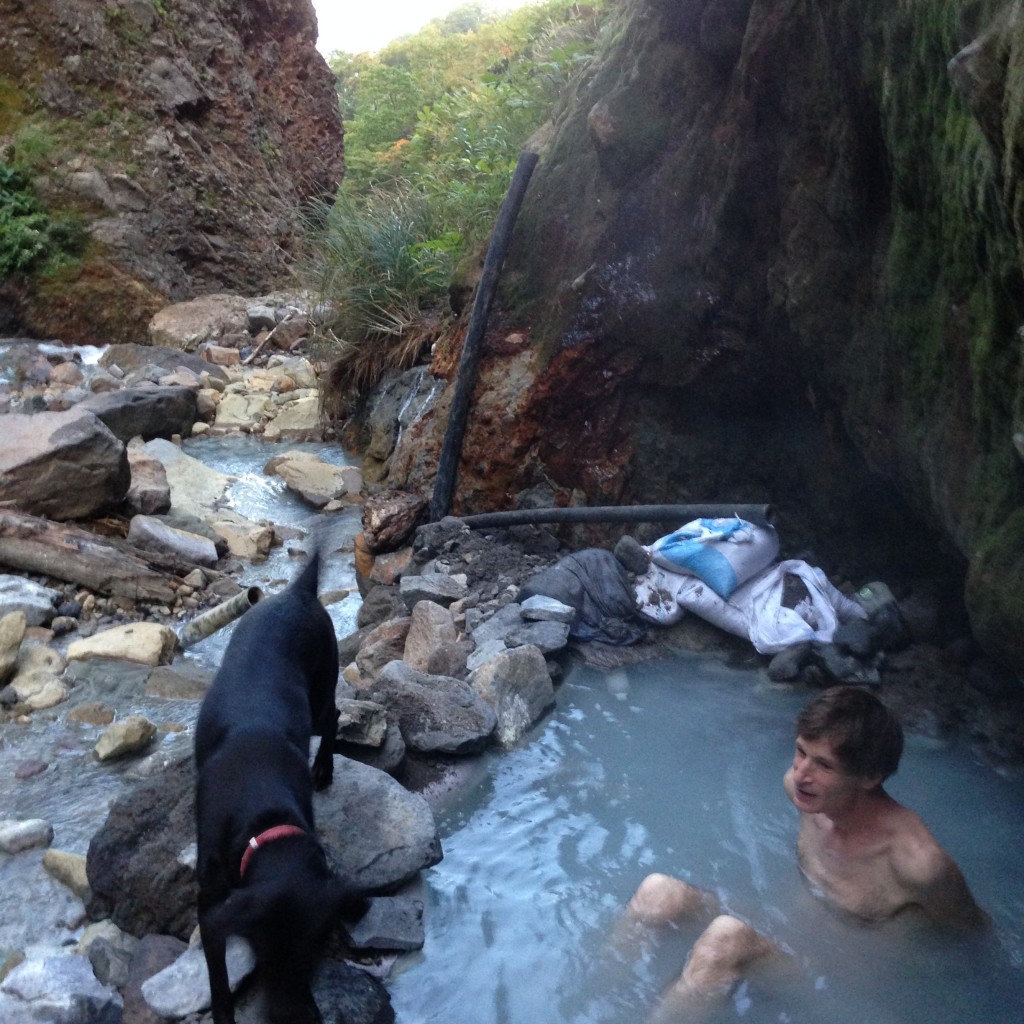 Over five meters of snow fall in many areas of Yamagata Prefecture. The roads through rural Yamagata, often closed in winter, are extraordinarily scenic – even for Japan, which has large swaths of forests, steep mountains, and powerful winding rivers. If you travel to the Ide Mountain Range, you will see a side of Japan that is completely unlike the stereotypes of congested cities that many foreigners hold of this country.
Over five meters of snow fall in many areas of Yamagata Prefecture. The roads through rural Yamagata, often closed in winter, are extraordinarily scenic – even for Japan, which has large swaths of forests, steep mountains, and powerful winding rivers. If you travel to the Ide Mountain Range, you will see a side of Japan that is completely unlike the stereotypes of congested cities that many foreigners hold of this country.
Secret Tour of a Private Hot Spring
Conversations with fellow bathers in hot springs can lead to adventures. While soaking in another remote hot spring, which was next to a gentle stream that was circulating through a winding forested canyon, I started chatting with a man whom I had just met in the rocky pool. As our bodies melted in the hot water with a slight sulfuric odor, we vivaciously discussed hot springs.
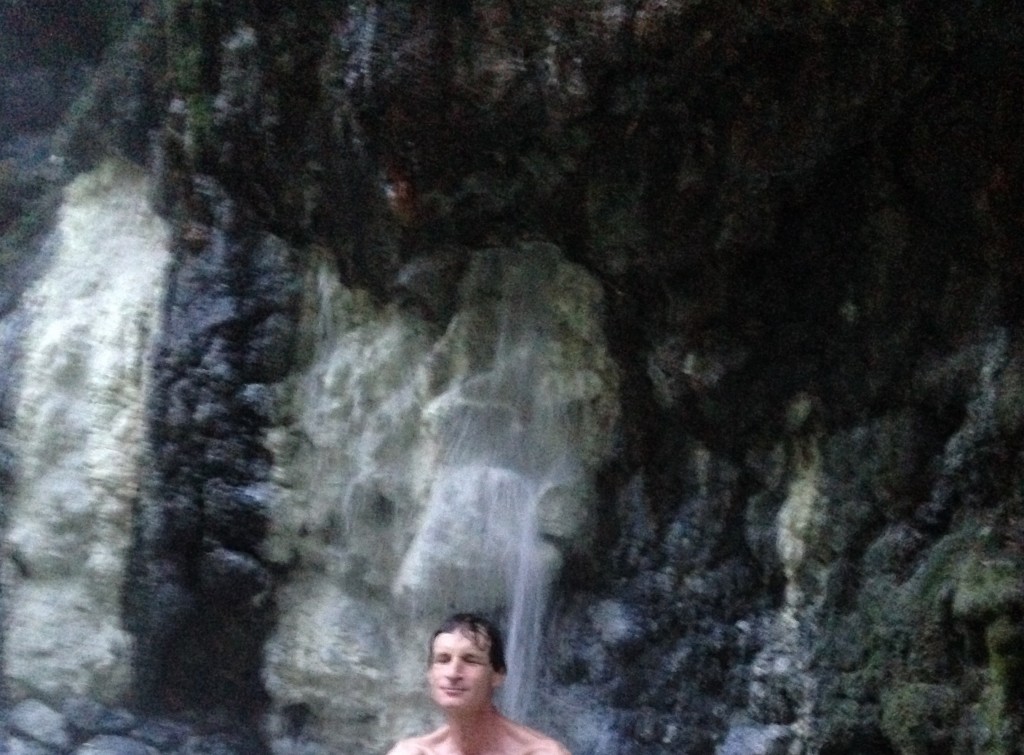 He was the most extreme hot-spring enthusiast I had ever met. After learning to trust us, he asked if my wife and I wanted to visit his “private” hot spring. I had to promise not to disclose the location and not to write his name. So I will call him Extreme Onsen Addict (EOA). We dried, dressed, and followed him along a tiny hiking trail.
He was the most extreme hot-spring enthusiast I had ever met. After learning to trust us, he asked if my wife and I wanted to visit his “private” hot spring. I had to promise not to disclose the location and not to write his name. So I will call him Extreme Onsen Addict (EOA). We dried, dressed, and followed him along a tiny hiking trail.
The remote hiking trail led through woods to high mountain peaks. The cascading swishes and splashes of numerous small waterfalls and a steeply descending river were the only sounds we heard besides the call of a circling hawk. The trail of slippery, loose, wet gravel that we walked upon curved around the edge of a precipitous cliff. Moving slowly, we grasped rocky projections for safety.
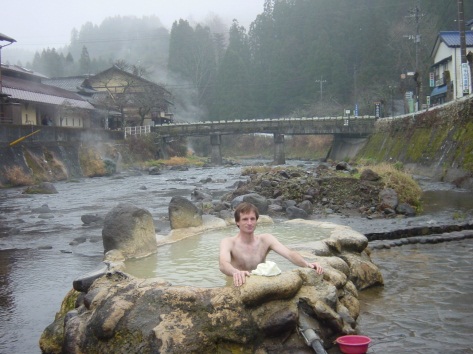 At one point, EOA stopped, looked carefully to make sure that no one else was watching, and moved a large rock aside. Under that rock, lay a concealed metal chain that he had previously bolted into the mountain side. Gripping the chain, we scrambled down the almost-ninety-degree drop towards the river. While descending, I spotted a small rock-edged bath between the river and a concave section of cliff. EOA pointed out a thin waterfall of steaming water.
At one point, EOA stopped, looked carefully to make sure that no one else was watching, and moved a large rock aside. Under that rock, lay a concealed metal chain that he had previously bolted into the mountain side. Gripping the chain, we scrambled down the almost-ninety-degree drop towards the river. While descending, I spotted a small rock-edged bath between the river and a concave section of cliff. EOA pointed out a thin waterfall of steaming water.
EOA and a friend had found the waterfall while hiking eleven years ago, and they realized that they could receive hot water massages all year round. Eventually, by digging holes and stacking up rocks, they created three small different baths, each with a different depth and shape. They spend hours adjusting the flow of cold and hot water, enjoying the serenity of bathing, and contemplating nature while bathing in the rugged Japanese mountains. The baths they create are just for their pleasure and that of close friends. Another reason to keep the location secret is that changing the landscape of a national park is probably illegal.
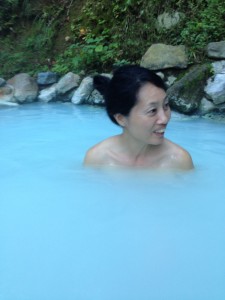 Due to torrential rain and rock slides during heavy typhoons, they have had to rebuild the baths several times. They clandestinely carry pipes, small shovels, and other tools up the mountain. Creating their secret bathing spot is a labor of love. EOA lives one hour’s drive from where he leaves his car before ascending the mountain trail to his private spring. He visits several times each week. It seems the Japanese do take their hot baths more seriously than anyone else on our planet.
Due to torrential rain and rock slides during heavy typhoons, they have had to rebuild the baths several times. They clandestinely carry pipes, small shovels, and other tools up the mountain. Creating their secret bathing spot is a labor of love. EOA lives one hour’s drive from where he leaves his car before ascending the mountain trail to his private spring. He visits several times each week. It seems the Japanese do take their hot baths more seriously than anyone else on our planet.
Hot Spring in the Center of a Kyushu River
The mountains on the southern island of Kyushu are not as high as those in Northern Japan, but mountains and rivers in Kyushu have their own charms, too. One very special river is the Seri River (芹川). It flows through a traditional hot spring resort called Nagayu Onsen (長湯温泉). The water bubbling up from many Nagayu springs is naturally carbonated, which is unique, even for Japan. But the most unusual bath is a free one called Ganiyu (ガニ湯). Ganiyu is centrally located in the Seri River.
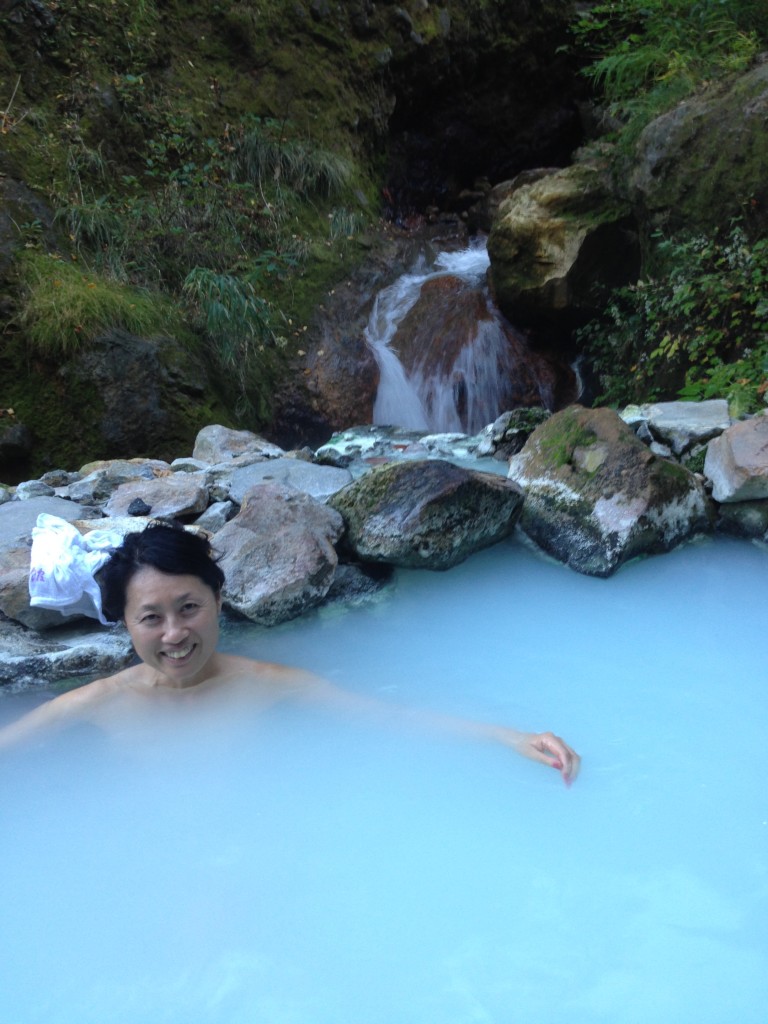 People on both sides of the river as well as those walking across a small bridge can look directly down on the rock-lined bath. In rural Japan, there is no big fuss made when people soak naked in mineral-rich thermal water. It is an aspect of Japanese culture. Bathing etiquette, though, must be followed. In mixed-bathing locations, men and women cover their private parts with tiny towels. The towels are not allowed in the water.
People on both sides of the river as well as those walking across a small bridge can look directly down on the rock-lined bath. In rural Japan, there is no big fuss made when people soak naked in mineral-rich thermal water. It is an aspect of Japanese culture. Bathing etiquette, though, must be followed. In mixed-bathing locations, men and women cover their private parts with tiny towels. The towels are not allowed in the water.
No one was in Ganiyu when I entered in the evening after a strenuous hike in the nearby hills. A few people strolled along the river banks, but they paid no attention to me. As I soaked my pleasantly aching legs, I watched the water whirling in the shallows, and lifting my head upwards, I saw silhouettes of birds flapping wings across the reddish evening sky. The sun soon set. It was a typical Japanese end to a day of hiking along the Ring of Fire.

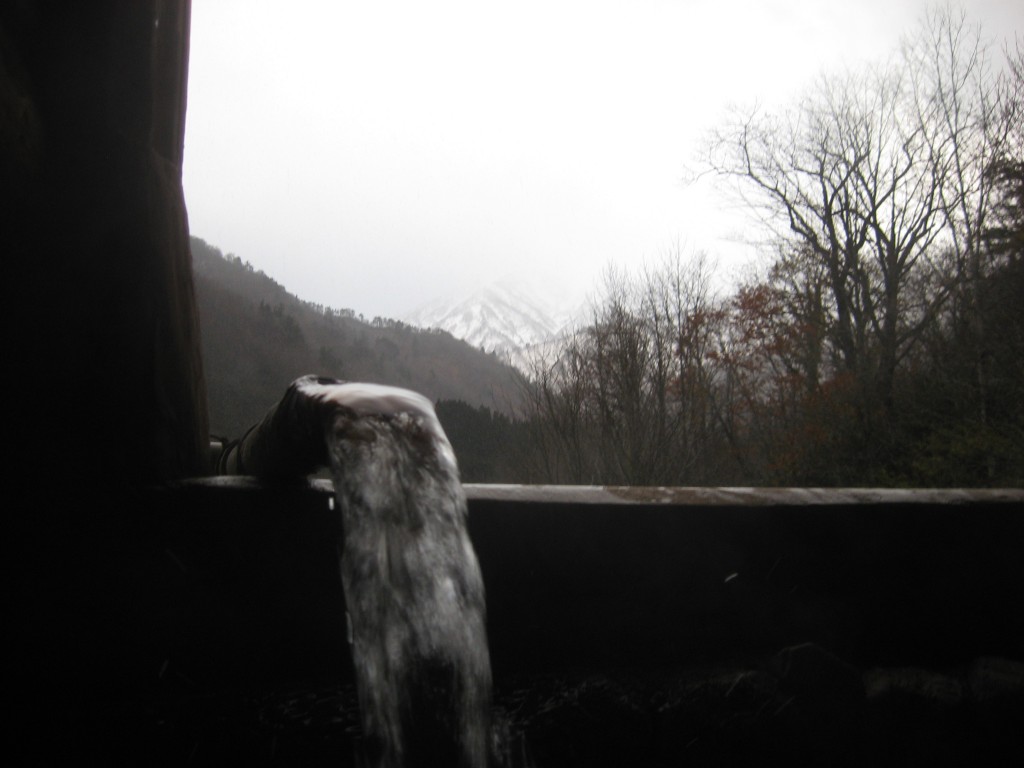
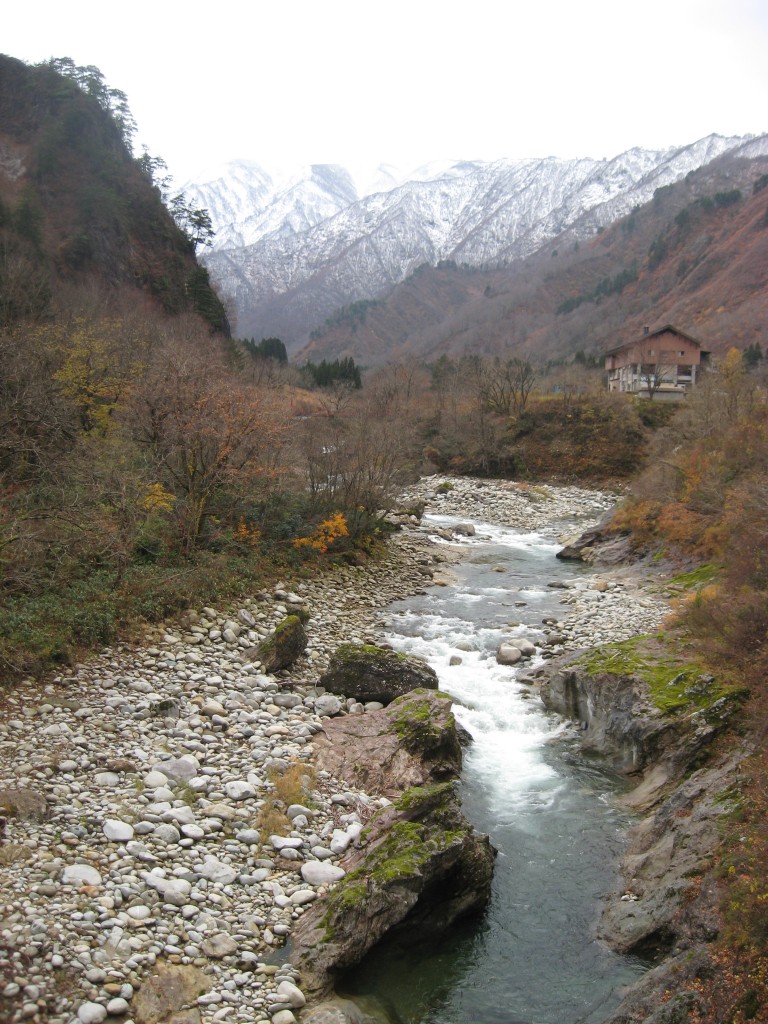
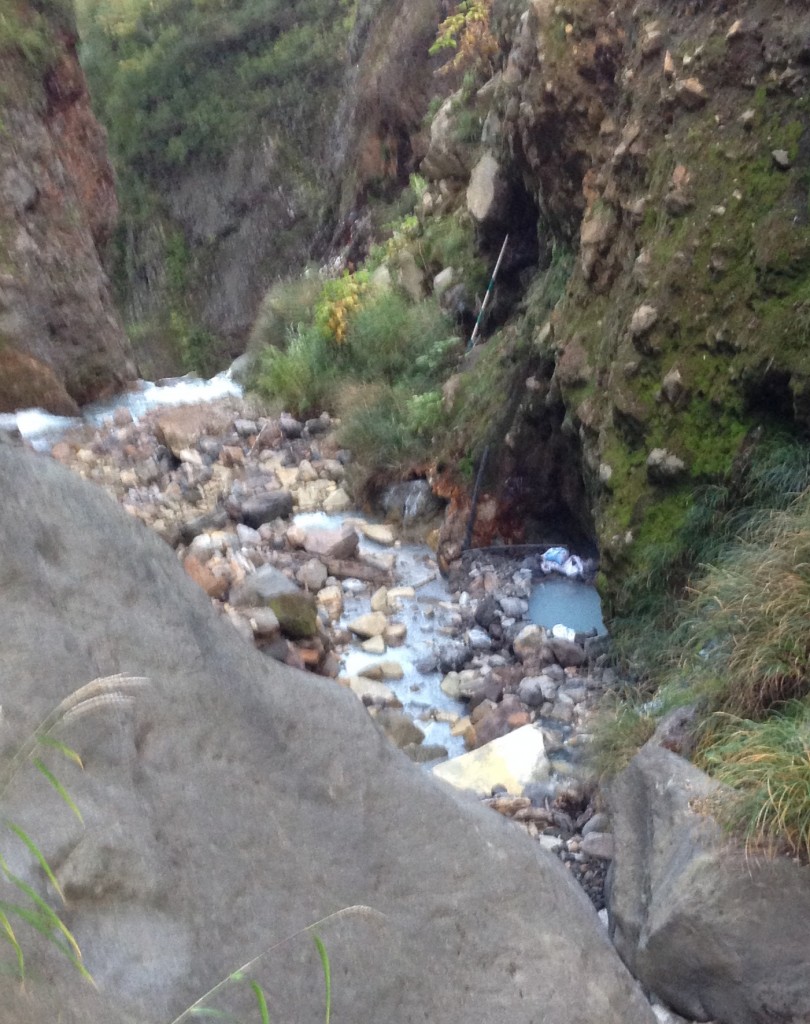
I would like to have a printed copy of this article which I found very interesting.
Unfortunately, we don’t provide a print version of the magazine. Your request is appreciated. Thanks for reading!